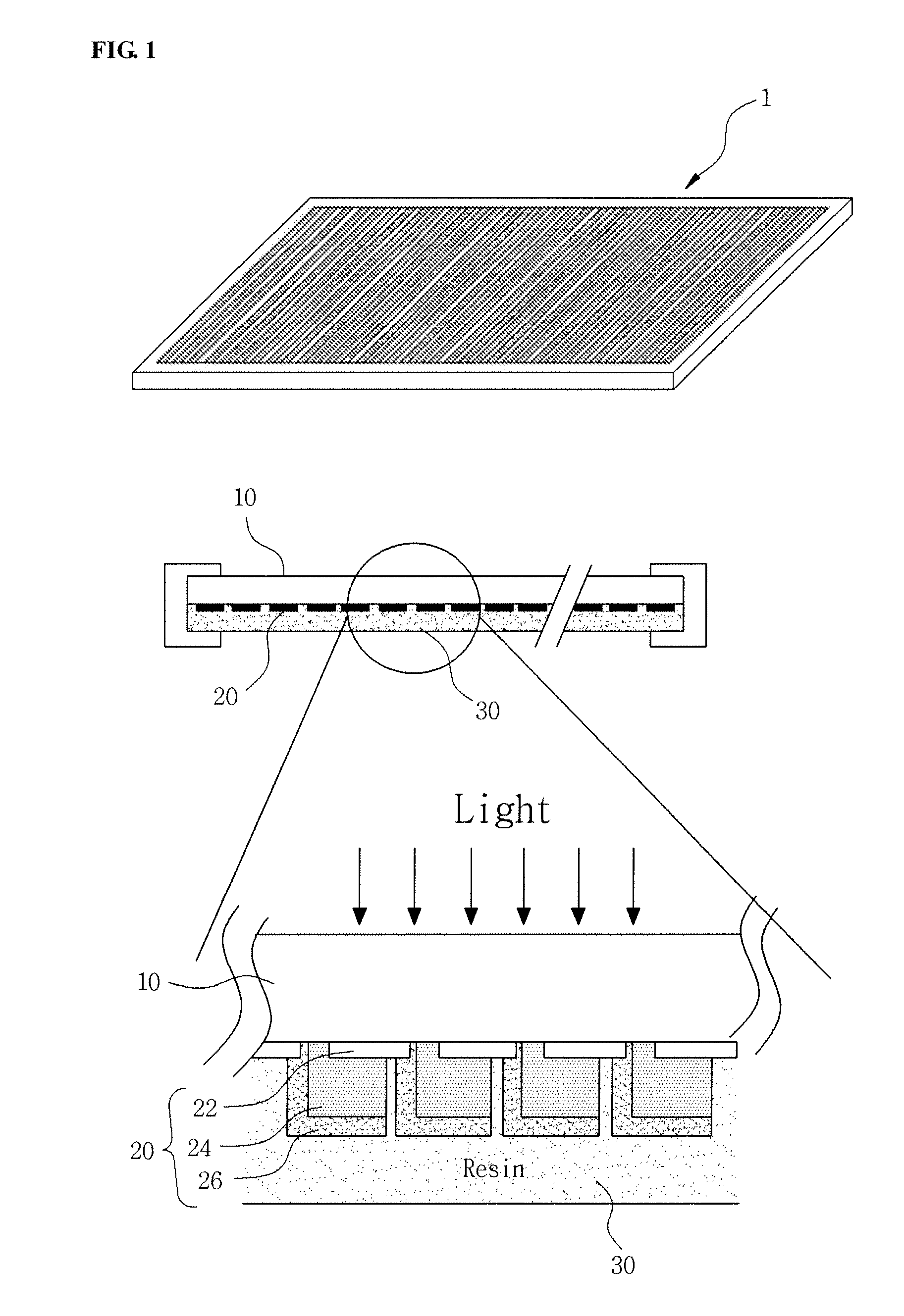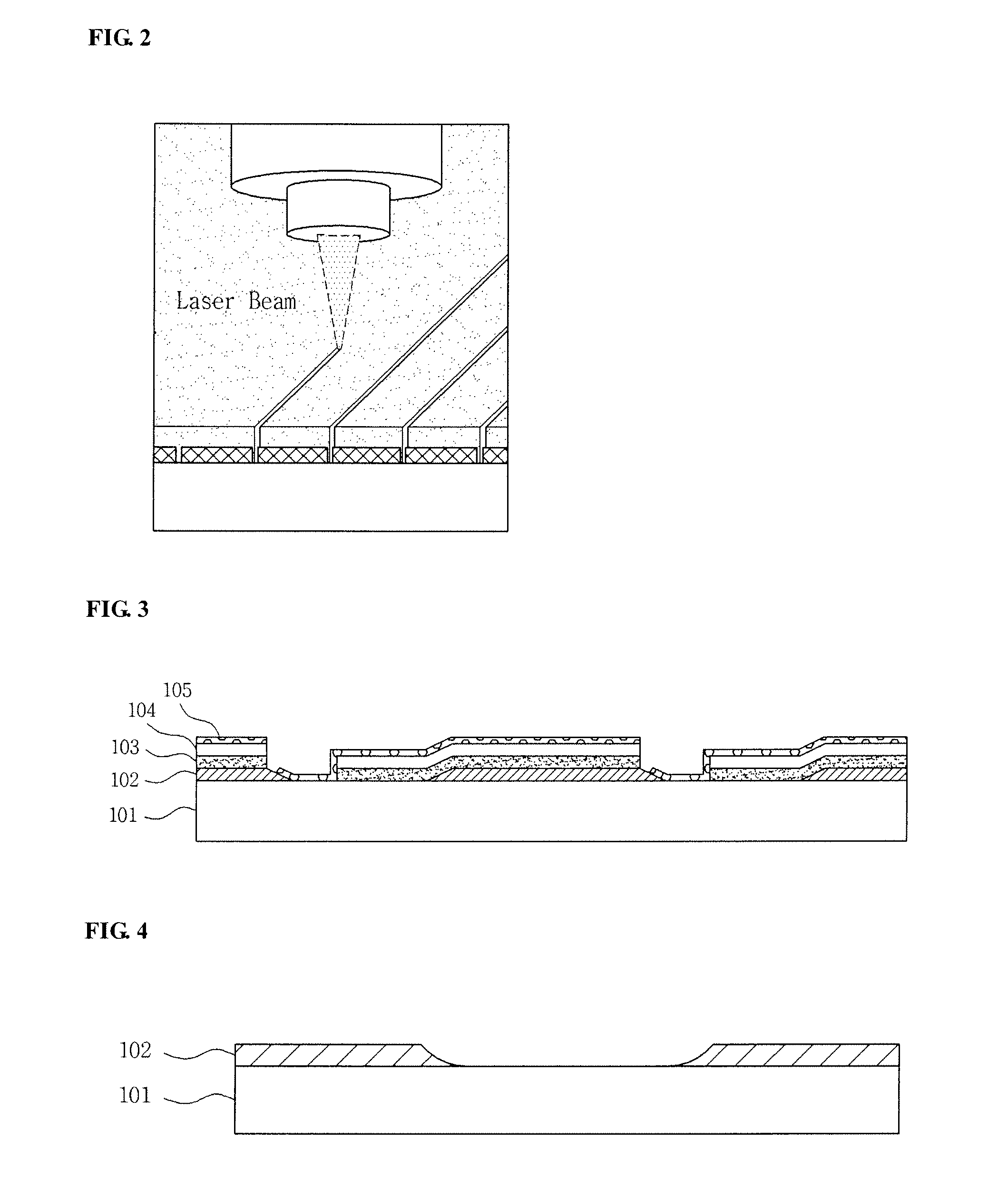Integrated thin-film solar cell and method of manufacturing the same
a solar cell and integrated technology, applied in the field of integrated thin-film solar cells, can solve the problems of increasing the price of raw materials, the inability to perform sequential processes under vacuum, and the laser patterning method, and achieve the effect of increasing the effective area of solar cells
- Summary
- Abstract
- Description
- Claims
- Application Information
AI Technical Summary
Benefits of technology
Problems solved by technology
Method used
Image
Examples
Embodiment Construction
[0072] Preferred embodiments of the present invention will be described in a more detailed manner with reference to the drawings.
[0073] In the present invention, a substrate refers to a substrate with an insulating film formed on a conductive substrate, or an insulating substrate. For description convenience, a description will be made for two cases where a substrate has a conductive property and an insulating property.
[0074] Accordingly, in claims of the present invention, the substrate comprises the substrate with the insulating film formed on the conductive substrate, and the insulating substrate. This is to employ the insulating film because the conductive substrate electrically connects with other conductive materials.
[0075] (1) Integrated Solar Cell Formed by Two Slant Depositions on Insulating Substrate.
[0076]FIG. 3 is a cross sectional diagram illustrating a structure of an integrated thin-film solar cell formed by two slant depositions on an insulating substrate 101 acc...
PUM
 Login to View More
Login to View More Abstract
Description
Claims
Application Information
 Login to View More
Login to View More - R&D
- Intellectual Property
- Life Sciences
- Materials
- Tech Scout
- Unparalleled Data Quality
- Higher Quality Content
- 60% Fewer Hallucinations
Browse by: Latest US Patents, China's latest patents, Technical Efficacy Thesaurus, Application Domain, Technology Topic, Popular Technical Reports.
© 2025 PatSnap. All rights reserved.Legal|Privacy policy|Modern Slavery Act Transparency Statement|Sitemap|About US| Contact US: help@patsnap.com



